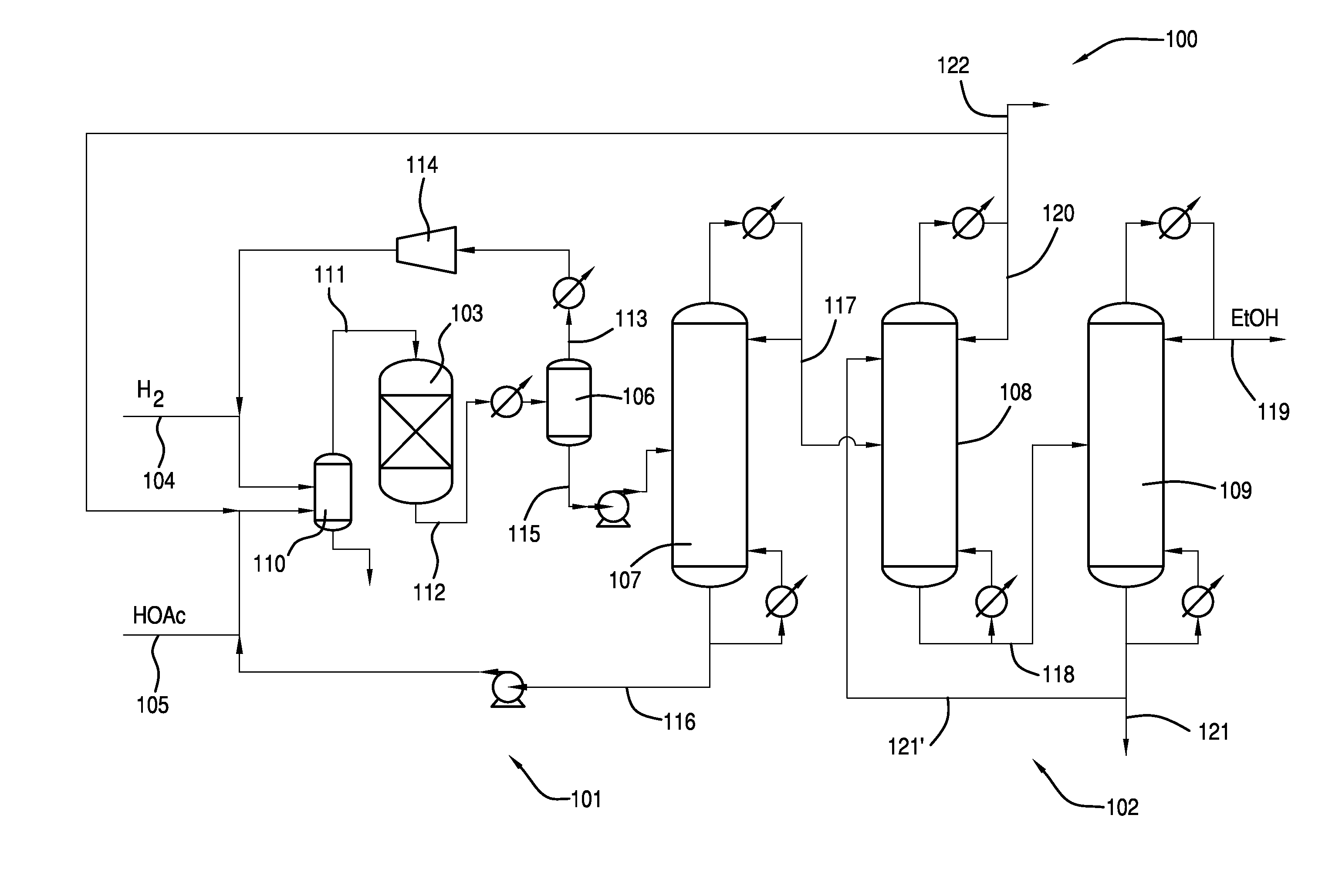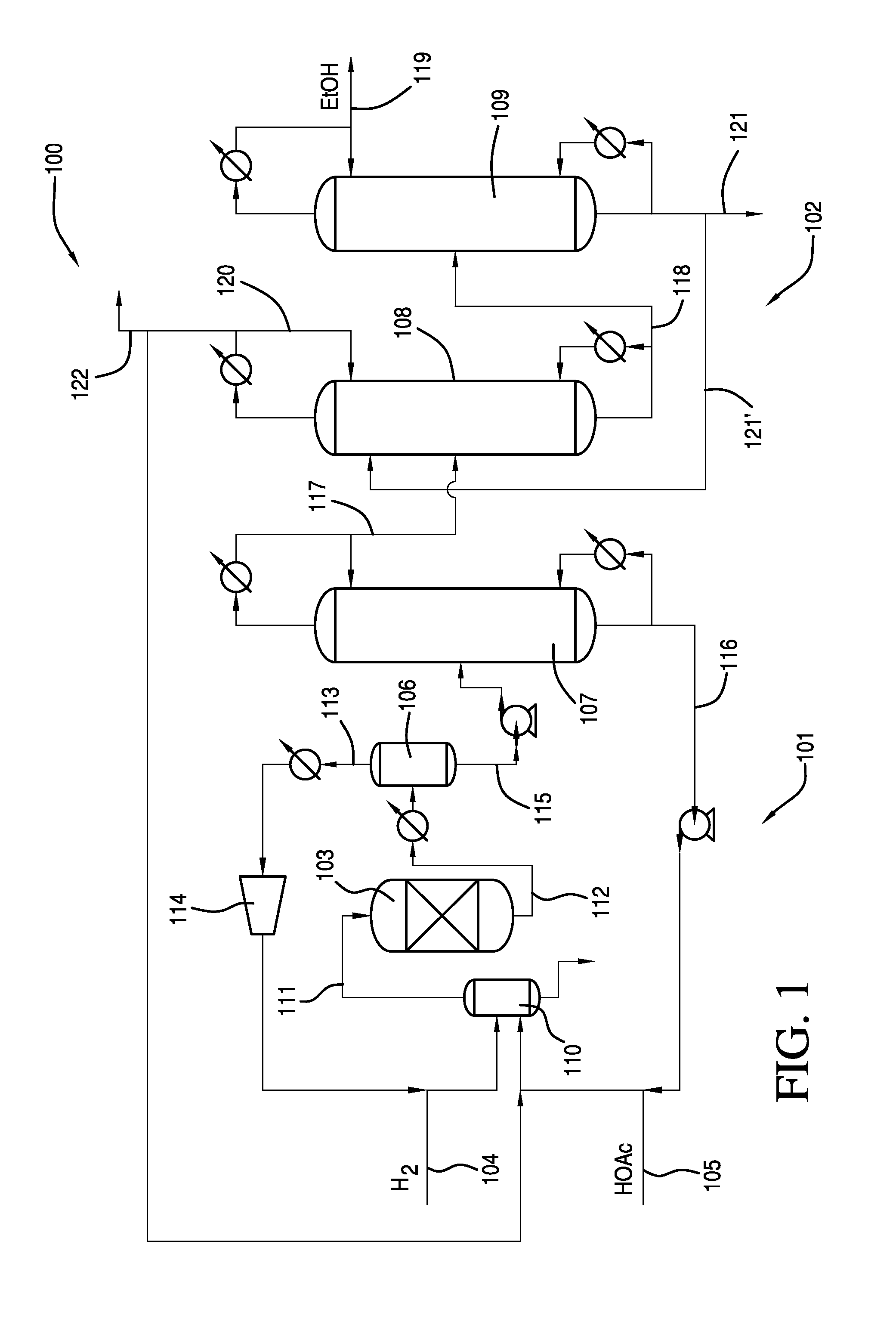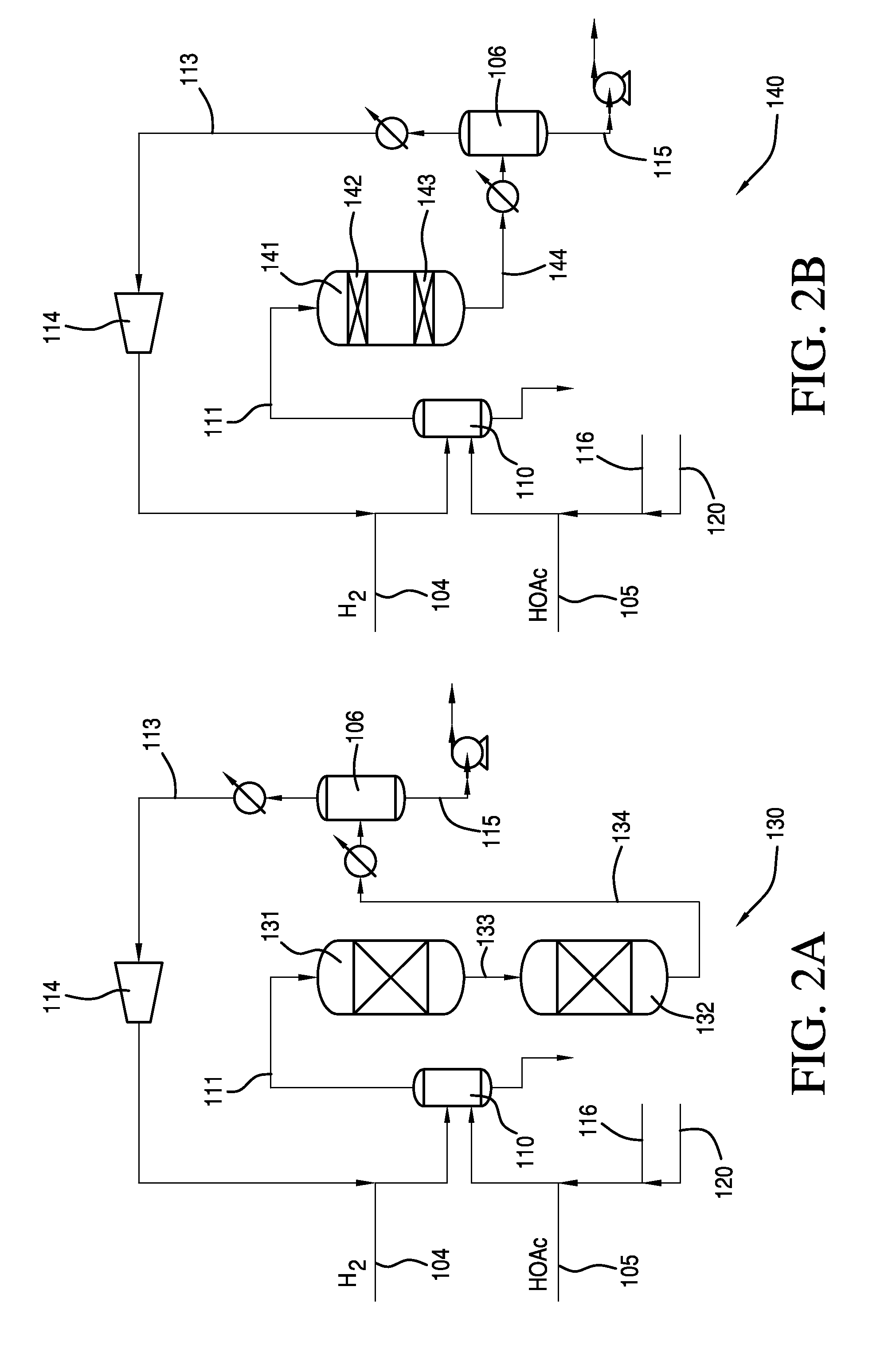Process for Making Ethanol From Acetic Acid Using Acidic Catalysts
a technology of acidic catalysts and acetic acid, which is applied in the direction of physical/chemical process catalysts, metal/metal-oxide/metal-hydroxide catalysts, oxygen compound purification/separation, etc., can solve the problems of difficult separation, limited production and recovery of ethanol from such reaction mixtures, and unreacted acid in crude ethanol products
- Summary
- Abstract
- Description
- Claims
- Application Information
AI Technical Summary
Benefits of technology
Problems solved by technology
Method used
Image
Examples
example 1
[0104]Acetic acid was hydrogenated in the present of an acidic catalyst comprising SiO2—TiO2(10 wt. %)-Pt(1.6 wt. %)-Sn(1.0 wt. %). There were 2 runs with this catalyst in a reactor at 200 psig, 250° C. First run was at 4500 hr−1 GHSV, and the second run was at 2200 hr−1 GHSV. In FIG. 3, the theoretical calculations for a Keq of 4 and for a Keq of 12. As indicated in FIG. 3, the amount of ethyl acetate at lower acetic acid conversion is greater than that of ethanol. However, at higher acetic acid conversions, the kinetics of the equilibrium reaction surprisingly drive the ethyl acetate content lower and increase the ethanol content. Table 7 summarizes the results.
TABLE 7HOAcSelectivity (mol %)RunGHSVConversionEtOHEtOAc14500 hr−171.9%58.8%40.6%22200 hr−192.9%79.2%20.4%
example 2
[0105]Acetic acid was hydrogenated in the present of an acidic catalyst comprising SiO2—TiO2(10 wt. %)-Pt(1.6 wt. %)-Sn(1.0 wt. %) and an acidic catalyst comprising SiO2—Al2O3(7 wt. %)-Pt(1.6 wt. %)-Sn(1.0 wt. %). Each hydrogenation was performed several times under different acetic acid conversion levels. The results are compared in FIG. 4. At lower conversions, the SiO2—Al2O3(7 wt. %)-Pt(1.6 wt. %)-Sn(1.0 wt. %) catalyst showed increased selectivity to ethanol. However, at higher conversions, the SiO2—TiO2(10 wt. %)-Pt(1.6 wt. %)-Sn(1.0 wt. %) catalyst showed similar selectivity to ethanol. In addition, surprisingly and unexpectedly, the productivity of the acidic catalyst at high acetic acid conversion showed a significant improvement.
example 3
[0106]The acidic catalyst comprising SiO2—Al2O3(7 wt. %)-Pt(1.6 wt. %)-Sn(1.0 wt. %) from Example 2 was also used to hydrogenate acetic acid in several runs under the following different reaction conditions set forth in Table 8.
TABLE 8SelectivityTem-HOAc(mol %)RunPressureperatureGHSVConversionEtOHEtOAc1200 psig250° C.4500 hr−187.565.833.42200 psig250° C.2200 hr−193.481.418.03250 psig300° C.4500 hr−194.375.420.84250 psig300° C.1300 hr−197.389.27.2
PUM
| Property | Measurement | Unit |
|---|---|---|
| Temperature | aaaaa | aaaaa |
| Temperature | aaaaa | aaaaa |
| Fraction | aaaaa | aaaaa |
Abstract
Description
Claims
Application Information
 Login to View More
Login to View More - R&D
- Intellectual Property
- Life Sciences
- Materials
- Tech Scout
- Unparalleled Data Quality
- Higher Quality Content
- 60% Fewer Hallucinations
Browse by: Latest US Patents, China's latest patents, Technical Efficacy Thesaurus, Application Domain, Technology Topic, Popular Technical Reports.
© 2025 PatSnap. All rights reserved.Legal|Privacy policy|Modern Slavery Act Transparency Statement|Sitemap|About US| Contact US: help@patsnap.com



